Peter I's War (Pacifica)
| Peter I's War | |||||||||
|---|---|---|---|---|---|---|---|---|---|
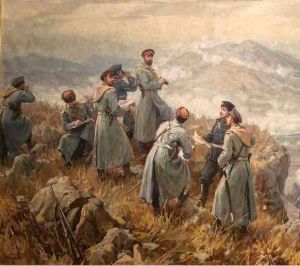 Prince Stephen of Sárgakastély during the Battle of Kodull. | |||||||||
| |||||||||
| Belligerents | |||||||||
|
| ||||||||
| Commanders and leaders | |||||||||
|
|
| ||||||||
| Strength | |||||||||
|
|
| ||||||||
| Casualties and losses | |||||||||
|
7,425 dead 2,200 missing 24,000 wounded |
98,000 killed or wounded 92,000 captured | ||||||||
Peter I's War (Sedunnic: Peter 1' Ramm; Ezervulgish: I. Péter háborúja) or Winter War (Sedunnic: Kodlussrammd; Ezervulgish: Téli háború) was the culmination of several years of deteriorating Sedunno-Ezervulge relations and an attempt by the latter to replace the democratically elected Sedunnic government with constitutional monarchy and a leadership more favourable to Peter I's regime. Hostilities began in 15 December 1884 and ended with the armistice of 31 February 1885 after Sedunnic troops had seized Fehérvár. The war ended formally 9 March with the conditional surrender of Peter I and the signing of the Treaty of Kodull. The war still remains a sensitive subject in Sedunno-Ezervulge relations.
Background
Sedunn and Ezervulge were long-term rivals and had widely different political systems. Sedunn was nominally an elective monarchy but essentially a parliamentary republic while Ezervulge was an absolute monarchy. Nearing the end of the 19th century the spread of liberal ideas and demand for democratic reforms grew in Ezervulge. King Peter I feared a democratic revolution, and noting Sedunn's support for other such movements in other nations, he believed Sedunn could intervene in favour of the rebels. Such discussions really did occur in the Sedunnic parliament, especially to support democratic movements in Karnetvor. However, Sedunn was divided over the matter.
The powerful Sedunnic upper class merchants, called the Sesslinners after the Sedunnic name for the sea between Cordilia and Crabry, valued friendly relations with Karnetvor and opposed Sedunnic interventionism. They had wide support in the Sedunnic officer corps, as Sedunn and Karnetvor had been close allies and had often trained together. The rural population generally supported the king and traditional Sedunnic anti-imperialism, but the bourgeoisie was divided.
In 1883 the Sedunnic parliament passed a law that forbid the wealthy Sesslinners from funding foreign states and made it harder for them to "buy" votes by building impressive buildings and arranging expensive festivities for the lower classes. Sedunn also refused to aid Karnetvor in its colonial war that it started the same year. Following this development some Sesslinners formed an informal political opposition called "Open World" that advocated radical changes of the Sedunnic political system. The movement was headed by Matts Opalienn, heir to the centuries old trading company Leveseif.
As the Sedunno-Karnetvorian alliance started to crumble and Karnetvor was locked in its war, Peter I developed a plan to forestall what was considered a likely Sedunnic-backed democratic revolution. He planned an invasion of the Sedunnic mainland to help Opalien seize the crown in Sedunn, believing Sedunn would be too dived to respond to an invasion fast enough. He also saw his chance to deal a critical blow to the Sedunnic maritime power.
Strategy
Ezervulge
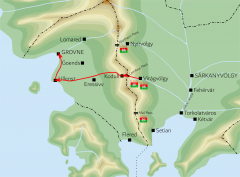
Early in 1884 a draft for an invasion of Sedunn was finished. It featured a thrust through the Lemfess pass in the mountains between Sedunn and Ezervulge towards the city of Kodull, and from there either use or prevent the Sedunners from using the railway system. The Ezervulgish would then push west to the sea to cut Sedunn in half, then a march on the Sedunnic capital Grovne. A secondary objective included destroying as much as possible of the Sedunnic ocean going navy laying in port in Ullenst. It was crucial to achieve a breakthrough before Sedunn could mobilise enough troops in a counteroffensive, therefore surprise and speed were essential. Peter I then hoped that Opalienn would initiate a coup d'état and negotiate a mutually favourable peace. The invasion was to be launched in 15 December the same year on Sedunn's National Day, anticipating prolonged response times due to celebrations.
Sedunn
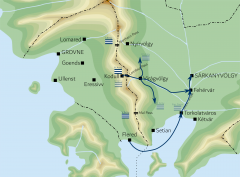
The Sedunnic the General Staff had started relocating and discharging what was believed to disloyal officers by early 1884, causing much bitterns in the corps. By autumn, Sedunnic spies had intercepted Ezervulgish orders to prepare for mobilisation. The Sedunnic military soon also learned of Peter I's plan itself. Several general plans to respond to an Ezervulgish invasion already existed, the generic plan featured attrition of enemy forces through a point defence of the important mountain passes along the border with Ezervulge, relying on forts and trenches to halt an advancement into Sedunn. There was however a risk that a prolonged war could threaten Sedunn's international trade and position abroad. Therefore an outspoken and charismatic general, Vimmru Kvestarl, proposed a different plan.
Kvestarl knew that the Ezervulgish would be eager to push trough the Lemfess pass at Kodull as fast as possible. In what was known as the Kvestarl Plan, the Ezervulgish forces would be allowed to cross the border, then they would trapped in a double pincer manoeuvre outside Kodull in favourable terrain. Kvestarl appreciated that he would be able to completely and thoroughly defeat the invasion force, which he believed would be a significant part of the Ezervulgish total fighting force. Such a defeat would open up Ezervulge for a counter-invasion and bring a much faster and decisive end to the war. He would also concentrate the Sedunnic navy in the Mediterranean Sea for a surprise attack against Ezervulgish naval ports. Kvestarl knew Sedunn had a much more developed railway system than Ezervulge, which would allow him to quickly transport a large number of Sedunnic troops in the "last minute" not to reveal his plan early.
Events
Invasion
Following what the Ezervulgish Military High Command had believed to be a secret mobilisation, the first troops of the IV Army and the VII Army under the command of Prince Stephen of Sárgakastély crossed the Sedunnic border at the Lemfess pass on 15 December in the afternoon. They only sporadic resistance. Simultaneously, the II Army initiated a siege of Fort Kliends in the north, while the I Army positioned itself on the Ezervulgish side of the Mal Pass in the south. A declaration of war was sent to Grovne, formally accusing the government of sponsoring rebels.
The advancing columns of the IV Army quickly seized the small border town Ronivv and surrounded the nearby fortress, but did not attempt to storm it. However, Ezervulgish troops found the connecting railway to be sabotaged. Learning this, Prince Stephen decided to press the advance, fearing that the Sedunners had knowledge of their plan. He left behind most of the division artillery to increase his speed.
Battle of Kodull
The highly developed Sedunnic railway system had enabled fast transportation of troops from the central parts of Sedunn, and as the IV and VII armies approached Kodull, General Kvestarl was able to position his III Army in favourable positions undetected. Anticipating the direction of the Ezervulgish push, he had also prepositioned significant amounts of field artillery around Kodull. Taking a great risk, Kvestarl let the bulk of the Ezervulgish forces pass his eastern positions before he ordered his troops to counterattack.
The initial Sedunnic artillery barrages shocked the Ezervulgish echelons, and as they tried to organise their lines, the Sedunnic infantry advanced in well-ordered formations, causing panic in the Ezervulgish ranks. Prince Stephen was unable to regain control and dispatched several orders to fall back towards Ronivv to reorganise. Only some of his units received these, contributing to the increasing confusion. Simultaneously, he ordered his artillery to advance towards the battlefield. However, concentrated Sedunnic artillery fire prevented a withdrawal in a larger scale, and Kvestarl was able to complete his double pincer manoeuvre, trapping most of the two armies in the crossfire. The onset of dawn meant even more difficulties for the Prince to organise his units. Unable to organise, and often without clear orders, Ezervulgish units soon started to lay down their arms and surrender. Only two divisions managed to retreat back to Ronivv.
Kvestarl intended to pursue the retreating Ezervulgish, but the massive amounts of troops captured and the darkness of the night slowed him significantly. As the first pursuing units approached Ronivv in the night, they were surprised to find that most of the Ezervulgish artillery had been left behind west of Ronivv, mostly in good shape. Prince Stephen had also retreated from Ronivv, unable to defend his position with the Sedunnic fortress intact. His father, King Peter, ordered him to fall back to Virágvölgy and wait for reinforcements for a counteroffensive.
The Sedunnic victory was decisive and Ezervulgish losses staggering. As General Kvestarl had hoped, he was now able to push through the mountains for his counter-invasion.
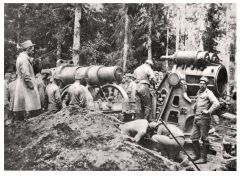
Even before invasion had begun, the Sedunnic navy had been deployed and was on its way Torkolatváros, the main Ezervulge naval port. Scout ships encountered the Ezervulgish navy still in a state of mobilisation. Skirmishes soon developed into a full battle as more and more ships arrived. Due to superior fire control systems and longer range, the Sedunnic fleet managed to break through the improvised Ezervulgish lines, scattering the Ezervulgish fleet. It proceeded to the Great River estuary to initiate a blockade of Torkolatváros and to land marines. However, the Ezervulgish flagship the HEMS Fehér sárkány and her escorts, which were the main target for the Sedunnic fleet, were in Kétvár further to the east loading ammunition. But she never left port and the Sedunners gained uncontested control over the Sea of Ascensios.
Stalemate in the north
Anticipating the invasion, the Sedunners had positioned the I Army in the north, denying the General János Kövér's II Army access to the strategic pass. Learning of the success of the Sedunnic III Army in the south, General Tavtid Tapienn attempted to break through the Ezervulgish lines twice, but was repulsed with heavy losses. The II Army was preparing to assault the Sedunnic lines when the Ezervulgish too received news about the defeat at Kodull. King Peter I ordered the II Army to hold and await new orders, which never came. Meanwhile it was decided that the Sedunners should not attempt to break through the Ezervulgish lines and try to bind the Ezervulgish troops there instead.
Great River campaign
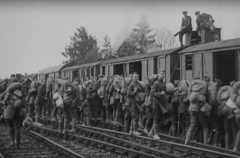
The Ezervulgish High Command was in shock after the defeat at Kodull and tried to organise a response to the immediate threat that the largely intact Sedunnic III Army posed to the entire Great River Valley. It was first decided to meet the Sedunners at the city of Virágvölgy and stall their advance long enough to bring in reinforcements from the eastern half of the nation. However, with the fall of Torkolatváros and the landing of the Sedunnic Expeditionary Corps there, Prince Stephen's southern flank was not secure, so it was decided to retreat to the strategic city of Fehérvár. The city was a logistical hub and should enable good supply lines.
Controlling Fehérvár was the next goal for General Kvestarl, from there it would be possible to exercise control over the entire northern half of the Great River Valley. He dispatched two corps to march to the north and south to protect his flanks, then the rest of his army, with reinforcements from the IV Army began transporting to Fehérvár, using the largely intact railways. Meanwhile, the Expeditionary Corps under General Kerrt All used captured river transports to push north, meeting relatively light opposition. The rapid loss of terrain and difficulties to relay orders made the High Command loose contact with the rest of the troops in southern Ezervulge. Military training for higher ranking Ezervulgish officers discouraged taking own initiatives, and many field formations remained passive and unaware of the rapid Sedunnic advance.
Fall of Fehérvár
The High Command had been unable to agree how to dispose of the estern reserves. Prince Stephen had advocated reinforcing Fehérvár, but the King Peter wanted to send them to the northern pass to attempt a breakthrough. A compromise had been reached where half of the reserves would be sent to the northwest, while the rest was to reinforce Fehérvár. It was however too late to reinforce the city; the Sedunners had started establishing control of the surroundings and managed to repulse the first Ezervulgish reinforcing echelons in the First and Second Battle of Fehérvár. Prince Stephen pledged his father for the other reinforcements, but he persisted on his original plan. Fehérvár was ill-prepared for a siege and was sealed off from the rest of the nation. To save the city from destruction, the Prince surrendered to General Kvestarl on 29 February under the conditions he would be allowed to return to his father to convince him to initiate peace talks. The General accepted, and an armistice between all forces under their respective command was signed. Meanwhile the rest of the Sedunnic IV Army was deployed to secure Kvestarl's flanks.
Rise of rebellions and the Fehér sárkány controversy
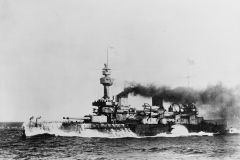
Learning about the unsuccessful Ezervulgish campaign, smaller sporadic riots occurred in the southwest of Ezervulge, as well as in Ikoanian-majority provinces. The Sedunnic government pledged its support and announced it was prepared to arm the rebels, likely in attempt at putting additional pressure on the Ezervulgish government.
As Prince Stephen travelled to the capital, the Sedunnic General Staff ordered a raid on the port of Kétvár to attempt sinking the Fehér sárkány to deal a final blow to the Ezervulgish capacity to wage war on the seas. Two days after the signing of the armistice, the Sedunnic navy initiated a bombardment of the docks where the flagship was berthed. The raid damaged the ship and some of the escorts badly, and one day later it sank. Prince Stephen protested against what he claimed to be a blatant breach of the armistice. The Sedunners on the other hand claimed the navies on neither side were under the command of the General or the Prince.
End of the war
Having lost control of the southwestern part of his nation, the strategic city of Fehérvár, and access to the sea, and his remaining forces in western Ezervulge being outflanked and outnumbered, King Peter was persuaded to sue for peace. The armistice was expanded to include all forces everywhere in Ezervulge and Sedunn 31 February. Negotiations took place in Kodull's town hall. General Kvestarl negotiated on behalf on the Sedunnic government, and Prince Stephen on behalf of the King. On 9 March the negotiations were over and the Treaty of Kodull was signed, ending the war and the hostilities. The terms were harsh for Ezervulge. The most important article of the treaty was the release of Ikoania as an independent state, which was a loss of about 10% of its territory, and perhaps more importantly some of the most developed and strategic provinces of the nation. This meant a severe weakening of the Ezervulge kingdom long sought after by the Sedunners. Furthermore, King Peter pledged to allow the formation of trade unions. It was a compromise; the Sedunners wanted instead the king to abdicate in favour of a democratically elected government. Sedunn in turn pledged not to support rebels in Ezervulge. Sedunn had also pushed for compensation of expenses in the form of war reparations, but had to drop the demand.

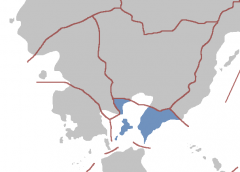
Aftermath
The war resulted in the decline of Ezervulge as an important maritime power. Additionally, Ezervulge isolated itself and lagged behind in industrialisation. The peace treaty led to much resentment among the Ezervulge nobles, and later among the general public that has remained until today.
Fearing that the other side would be able to use railways like the Sedunners did in the war to such a great an effect led to the two nations adopting different track gauges to prevent either side from using its own trains on the other side of the border. Despite improved relations since after the Great War (in which Ezervulge was neutral) the difference still exists, and travelling by train between the two nations is not as smooth as between other neighbouring nations.
The wealthy Sesslinner Matts Opalienn, who would have attempted to seize the Sedunnic crown if the Ezervulgish invasion had been successful, committed suicide. He had no legal heirs to his trading company. It was sold by the Sedunnic state to the highest bidder. Qvaitican-Sedunner Kerrt Clemens acquired the company. Clemen KJ remains one of the largest shipping companies in the world.
The war is seen as a pivotal moment in Sedunnic history, and even of democracy itself. The Sedunnic anthem was written in celebration of the victory.
Controversy
Much of the remaining resentment is attributed to the controversy regarding the sinking of the flagship, the Fehér sárkány. It is seen a deceitful act and some popular movements demand an official apology from today's Sedunnic government, which it refuses. Sedunn also had a tradition of displaying the captured Ezervulge artillery around Kodull. Until 1975 a salute was fired with a few of them on the Sedunnic National Day, which also happened to be the date of the battle of Kodull. This was seen as a disrespectful act in Ezervulge.
The fact that Sedunn knew of the Ezervulge preparations for the war is also a source of controversy. Experts believe that the war could have been avoided if the Sedunnic government had let the Ezervulgish government know this, which could have led to peaceful negotiations instead. However, experts also acknowledge the rivalry between the two nations and the Sedunnic fear of Ezervulge, hence taking the chance too cripple its neighbour could be argued to be a logical move. Nearing the end of the 19th century, Sedunn was coming under increasing pressure from other sea powers, such as Tekarai and Karnetvor and likely sought to secure its home borders.
In popular culture
Several novels and films depicting the war exist in both nations, predominately Sedunn. Huvvgen (Austral "General") and 1884 are two examples of Sedunnic epic films. There are also grand strategy video games.